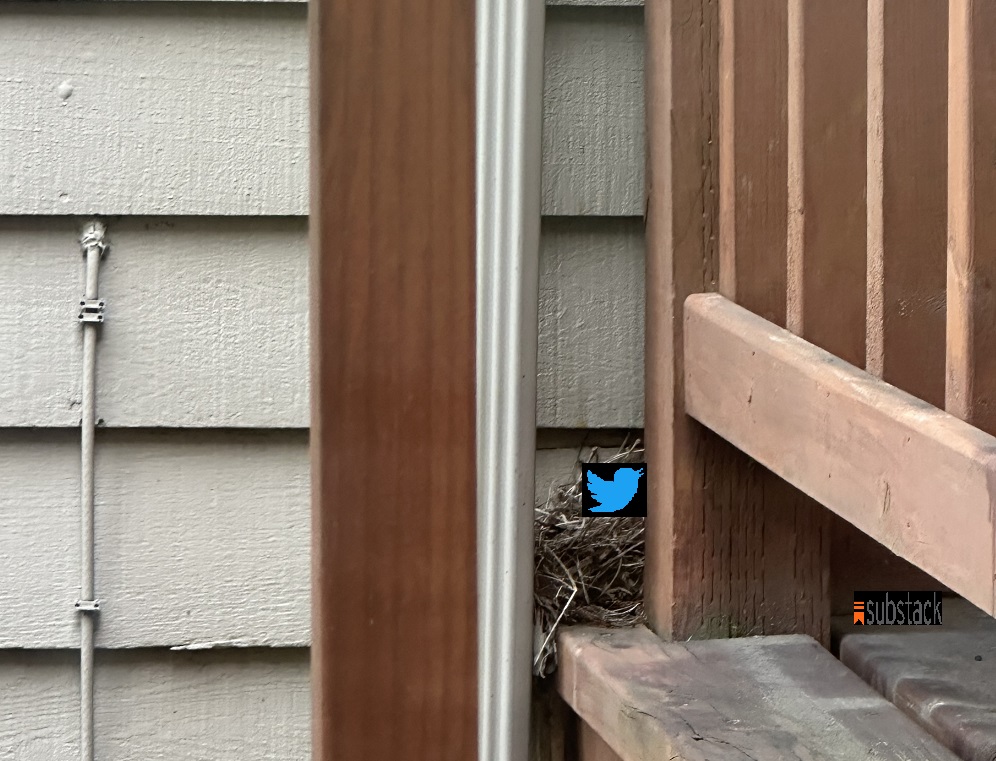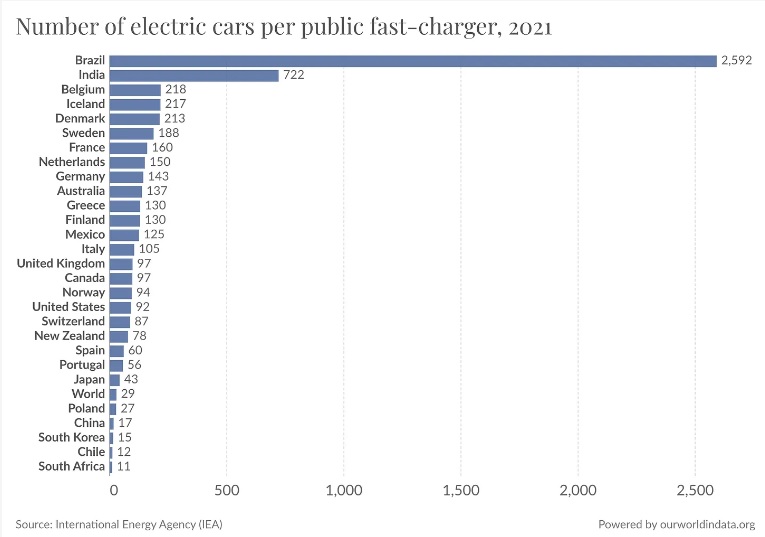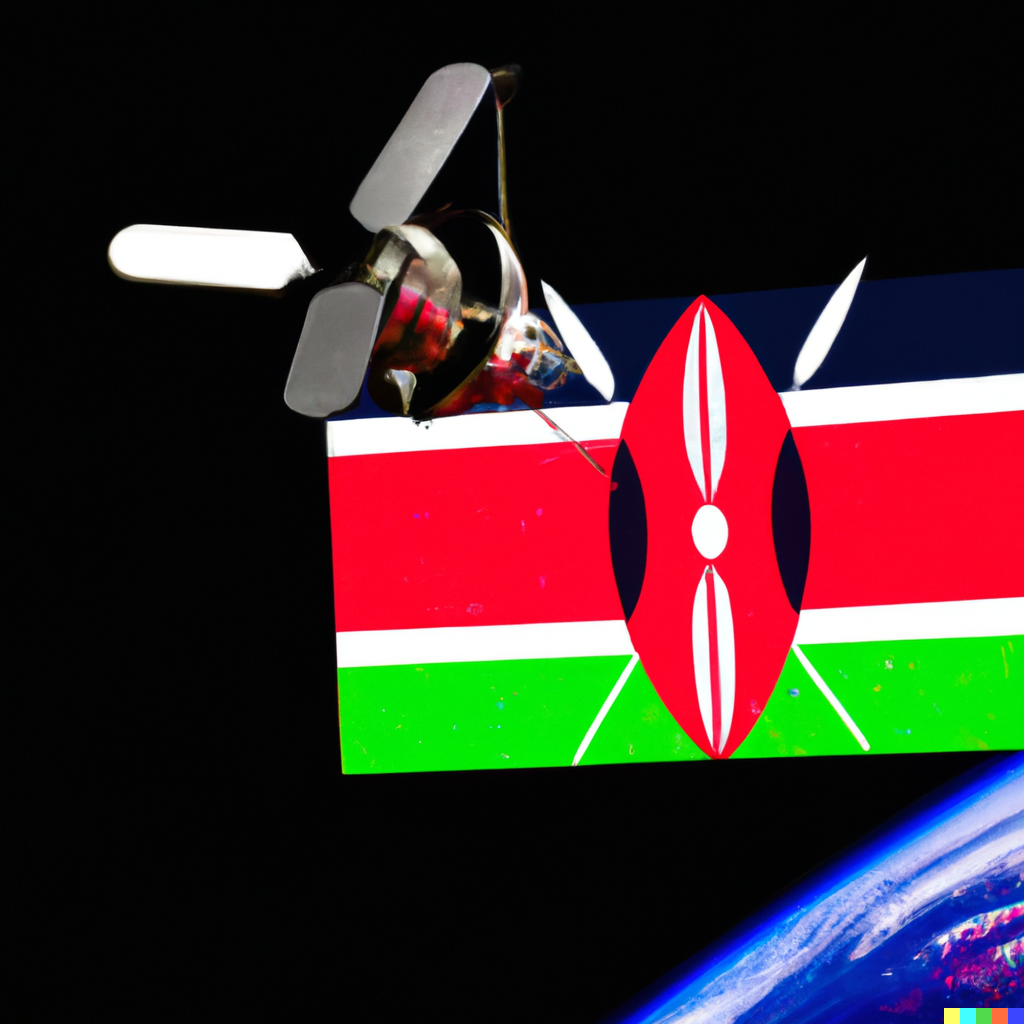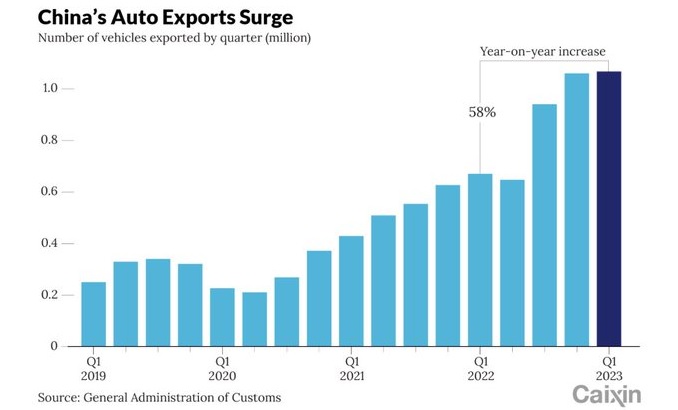From our home office we peer outside at the never ending Seattle winter and see birds, more weather-optimistic than we are, constructing a nest on the porch. We watched them painstakingly build over two weeks, carrying twigs in their beaks and placing them carefully into the nook created by the vertical porch post and gutter downspout. And yet, as always, real estate is always about location location location and so we worry the birds are a bit too optimistic. Not about the weather which surely must turn for the better at some point but by their building a nest on the floor of the porch.
A neighborhood cat who we have dubbed ‘Stache, because of the dark fur color under his nose creating the illusion of a short stubby mustache (and “Hitler” being an entirely inappropriate name for a cat [though we once met a cat in New Orleans named “Mao”]), is known to patrol this particular porch. When he does so he often will torment our indoor cat, Willow. Stache will fling his entire body against the sliding glass door and screech at high octaves. Willow, normally a pacifist, gets large and slaps at the door herself. Of course, neither can actually hurt the other through the glass door. In this way, the two felines are very much like NBA players pretending they are tough but knowing teammates and referees will intervene to prevent a real fight. But the birds? They are not protected at all.
We do not pretend to know the first thing about building a nest or laying an egg (except that one time on stage) but we assert it should have been built above floor level in a safer spot. It is true the downspout and post provide some protection but any cat, coyote or raccoon when coming anywhere near the porch surely sees a lovely egg and poultry entrée. As we contemplate building some sort of protective wall for the birds we see solar and EVs developing, eye Kenya’s second space satellite and gaze in wonder at two data points in the U.S.-China Competition of Competence. It’s this week’s International Need to Know, like Draymond Green stomping on international information, like Domantas Sabonis, grabbing international data.
Without further ado, here’s what you need to know.
The Solar EV Twins
The world continues to make progress on dealing with climate change though the news is usually filled with other more important stories about [checks notes] Bud Light. But while drinking a fine craft brew we’ll highlight two positive stories. First, the energy think tank Ember reported that solar and wind energy generation reached a new high, now generating 12 percent of global power. You can see in Ember’s chart below it is possible that 2023 is the year power generated by fossil fuels begins to decline. In addition, electric vehicle sales continue to go up around the world with China leading the way. That’s good and will be even better when these cars are recharging from electricity generated from wind, solar and other clean sources. But, of course, with more EVs we need more charging stations. Hannah Ritchie reports that for the most part countries are keeping pace. As you can see in her chart below, South Africa, Chile, South Korea, China and Poland are tops at providing enough chargers. The world is on a good path for solving the power generation and transportation legs of climate change. Lots of work still remains to be done in cleaning up manufacturing and agriculture.
Kenya’s First Satellite–Globalization Lives!
Kenya launched its first “operational earth observation satellite” last week. According to Reuters, it will “collect agricultural and environmental data, including on floods, drought and wildfires, that authorities plan to use for disaster management and to combat food insecurity.” The satellite was delivered to orbit on Elon Musk’s SpaceX rocket (really wish he’d concentrated on rockets and cars rather than 150 character messages). A Bulgarian aerospace company helped Kenya’s Space Agency in developing the satellite. It takes a village globalization to send a satellite into space. Kenya already had a different type of satellite in space. In fact, seven African countries currently have satellites orbiting the earth: Nigeria, Ghana, Angola, South Africa, Morocco and Algeria. Many more to take flight soon. Technology is increasingly distributed.
China Corner: Competition of Competence Continues
We talk often about the Competition of Competence between China and the U.S. and West. We’ve seen lots of discussion this week about the Global South not aligning with the U.S. In commenting about this at a conference last week former U.S. Secretary of Treasury Lawrence Summers said, “Somebody from a developing country said to me, ‘what we get from China is an airport. What we get from the United States is a lecture.’” So it’s a good time to check in with some data on the competition. In China’s favor is its massive increase in auto exports as seen in the first chart below. Many of those exports are headed to Europe, which might or might not make Europe less inclined to curry favor with China and reduce the sway of companies such as BMW, Audi and Volkswagen on China policy. In the U.S.’s favor is the large increase in the number of Chinese refugees trying to enter the U.S. as seen in the second chart below. Immigration is one of our most important measurements of the Competition of Competence. The U.S. is winning it handily in terms of which country folks would rather move to. But there’s a long ways to go in this competition.







